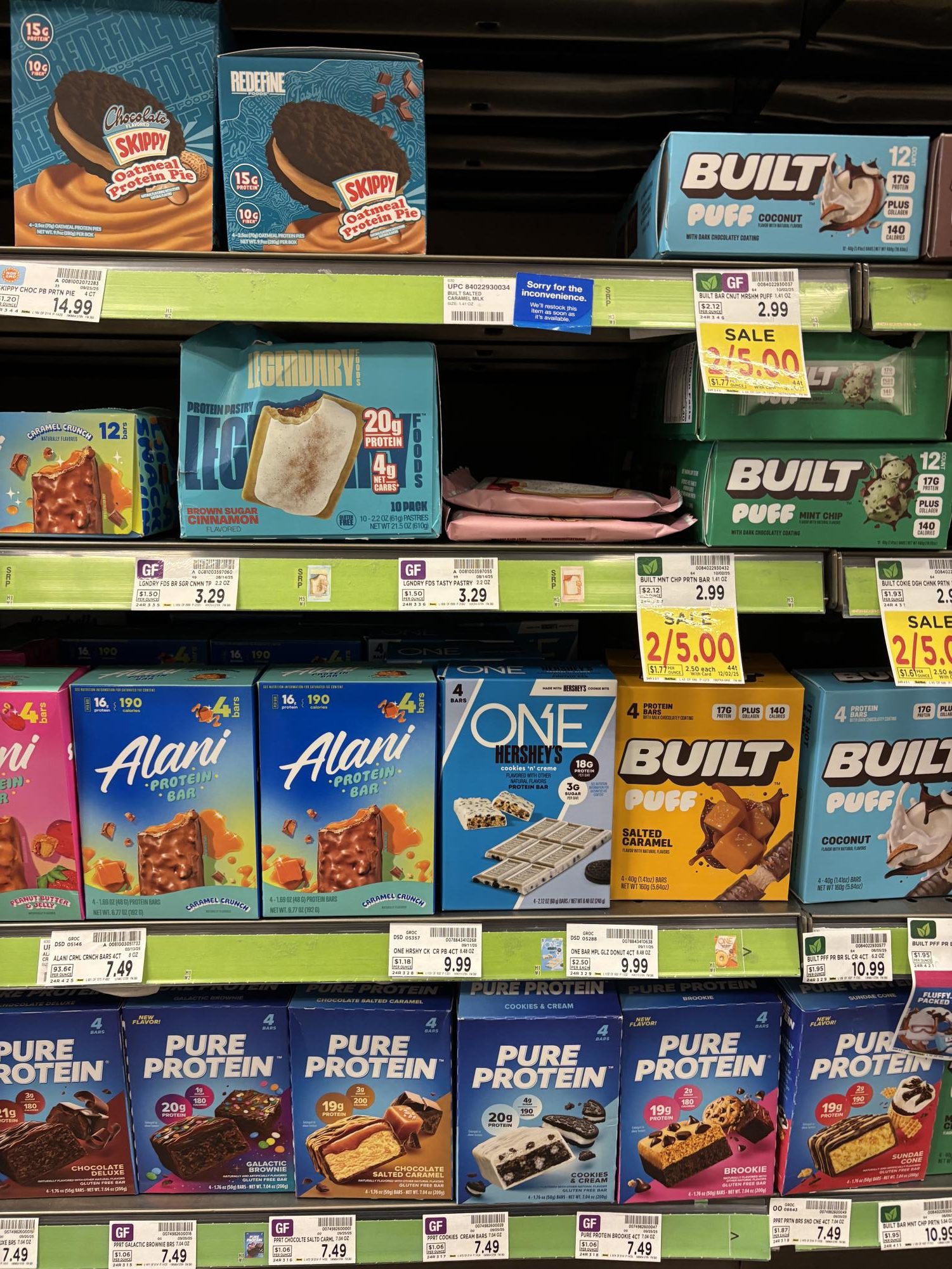From viral TikTok recipes to gym influencer meal plans, the high-protein diet has managed to stay popular for months. With #highprotein having over 920,000 posts on TikTok, recipes containing protein powder, cottage cheese, Greek yogurt and more flood social media.
Brands are releasing high-protein versions of their most popular items. Some examples include Starbucks, which released protein cold foam on Sept. 29, Annie’s Mac and Cheese and Cheerios. Many superstores have entire aisles dedicated to snacks that help customers reach protein goals.
Kara Lee is a certified clinical health and wellness coach in Portland, and advises many clients who get nutrition advice from social media, ChatGPT, magazines or books. She says that only a few groups of people need a high-protein diet.
“[Those who need a high-protein diet are] athletes, as they need more protein for muscle repair and growth; those trying to lose weight, as more protein intake can increase satiety and help preserve muscle mass; older adults over the age of 65 as a high-protein diet helps prevent age- related muscle mass loss [and] frailty… and then patients recovering from illness, injury or surgery as higher amounts of protein can help with a faster recovery by helping the body build new tissue,” said Lee.
Health teacher Steven Scoville teaches about the importance of a balanced, healthy diet. He says around 30% of daily calories should be coming from protein.
“If [someone] is eating a balanced diet to begin with, there’s not really a necessity for high protein,” said Scoville. “What you’re after in protein is the amino acids, and your body can only use so many of them. Any extra amino acids that you’re consuming … [are] just flushing through your system.”
Junior Kai Lindsey focuses on a high-protein diet and consuming natural and less processed foods, but sees the benefits of high-protein items.
“It’s more convenient if you don’t have any other options, like if you don’t have time to cook [or] bake a meal and you want to reach a certain protein goal,” said Lindsey.
Lee thinks high-protein products won’t stick around for long.
“We’re not protein-deficient in America. We’re fiber deficient… [and] magnesium deficient, but Americans are not protein deficient,” said Lee. “I’m not sure [that] adding protein… makes healthy eating more accessible, as these products are usually more expensive than other food products from the same food companies.”
Everyone’s personal nutritional needs are different. If you are having concerns about your protein intake or your overall health, consult a personal healthcare provider.


